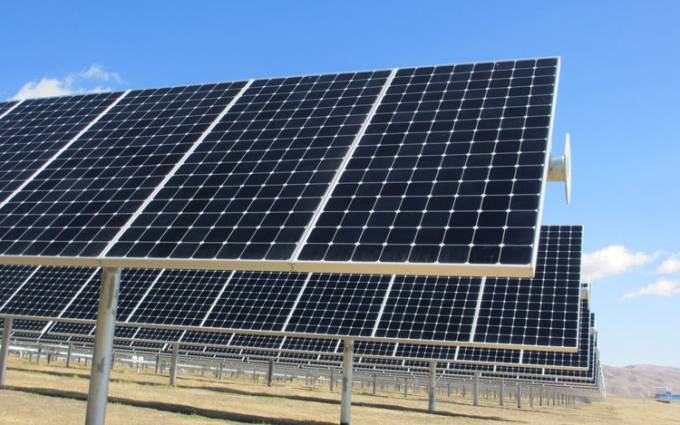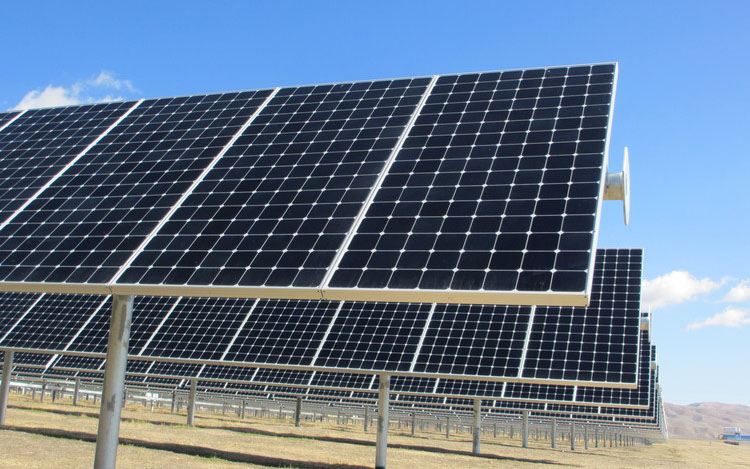Solar prices dropped but Zesa still in the dark


Renewables such as solar are cost-competitive and can be built at a much faster rate than coal-fired power plants
Jeffrey Gogo Climate Story
Energy costs rose faster than most products on the index of consumer prices in April, compared to a year ago.
Though the increase was limited to liquified petroleum gas (LPG) and liquid fuels, up 4,25 percent and 1,14 percent, respectively, it does show the constant existential threat that energy, as a sector, poses to inflation — and to access and supply.
Annual inflation for April inched to 0,48 percent from 0,21 percent a month earlier, with the rate of LPG price increase second only to that of secondary education at 4,26 percent. Had state power utility, Zesa Holdings, had its way in 2016, the cost of electricity could have soared 42 percent to 14 cents per kilowatt hour (kWh). ZERA, the energy regulator, would have none of it.
The cost increases in liquified petroleum gas broadly reflect the rising global prices for this more environmentally-friend product. But there is something curious about why LP gas has gained traction in households as an affordable and sustainable energy option for cooking, than the gas — or solar — have with companies and Zesa Holdings.
A 2015 report by ZERA found that LP gas use had trembled to 19 million kg in that year from around 6,6 million kg in 2012. Doubtless, much of it was used in the home. By comparison, investments into solar and gas make up a small portion of overall company spend on alternative clean energy, at around 2 percent and 10 percent, respectively, compared to electric generators at 60 percent, according the 2016 CZI Manufacturing Survey.
The option by companies for higher-priced fossil-based energies to back up grid power supply shortages is baffling, but is indicative of a familiar trend even at the national level. Zesa Holdings has had to cough up tens of millions of dollars importing up to 350 megawatts of electricity per month from South Africa and Mozambique, but is now facing disconnection for defaulting payment — some $100 million is due.
Faced with the only option of cutting consumers off for long hours daily, Zesa Holdings’ import strategy is understandable, but not excusable. A few years ago, the idea of Zimbabwe switching over to grid solar — or even off-grid — was considered difficult largely due to higher initial installation costs of the PV solar technology, and because “coal-fired power plants were thought by many to be necessary to satisfy the energy demands” of developing countries, cheaply.
However, over the past decade, the energy market has transformed: the price of renewable energy from solar has dropped dramatically, from about 18c/kWh to just 3c/kWh today, according a 2017 report by the International Energy Agency.
This is much cheaper than thermal, which costs three times more. Renewables are now cost-competitive and being built at a much faster rate than coal-fired power plants. Across the world, installed solar power capacity has climbed 5 700 percent from just 4 gigawatts in 2000 to 227 gigawatts today, as prices fall, the IEA says.
Now, why should Zesa Holdings continue to pay 18c/kWh to South Africa when it could redirect that money into the development of a PV solar power plant, particularly given the sun shines much brighter in Zimbabwe — an average 300 days per year — compared to several cold European countries, where solar has gained power?
To get a better understanding of the whole problem, with particular interest on companies, I interviewed Tawanda Muzamwese, an energy consultant and executive director for the Business Council for Sustainable Development Zimbabwe (BCSDZ), a grouping of multiple local companies dedicated to greening their operations through, among other things, renewable energy use. Below is an excerpt of the interview.
JG: Can you give us a sense of whether Zim companies have been adept at adopting renewable energy in the face of the country’s long running power crisis? Roughly, what percentage of Zim companies have adopted renewable energy say in the past 20 years?
TM: Companies are increasingly seeing the importance of adopting renewable energy in their energy mix. We have noted an increased uptake of solar for lighting purposes in selected companies involved in manufacturing of goods.
The private sector companies in mining have also invested in solar water heating for housing developments earmarked for their staff members. This a is a good initiative towards the green economy.
In pursuit of increasing agricultural productivity amongst suppliers of raw materials e.g. fruits and vegetables processed locally into value added products; there has been an increase in the number of private companies investing in solar irrigation.
This is a mechanism of harnessing renewable energy for productive use. While the potential exists, the proportion of renewable energy in the energy mix is still lower than it can possibly be. This calls for increased co-operation amongst stakeholders including public sector, private sector, civil society, development partners research and development.
JG: Do you think renewables such like solar are likely to be adopted by more companies in the country — why not, if not?
TM: Renewable energy technologies are likely to be adopted by many companies as a result of the potential to save costs in energy. There are also benefits related to climate mitigation, ability to enter foreign markets as a result of green processes, green consumer requirements and improved corporate image of the organisations.
Companies are increasingly realising that sustainability can improve their competitiveness and profitability. The increased legal requirement for companies to reduce emissions will also encourage more organisations to implement climate mitigation options such as investing in renewable energy.
JG: In a 2014 presentation you made on the Green Economy and Green Industry at a seminar in Harare you indicated that the Zimbabwe Government, BCSDZ and UNIDO were jointly pursuing the Green Industry Agenda. Since 2014, how has this agenda been implemented, where, with what impact?
TM: Green Industry entails greening existing industries through resource productivity, pollution prevention and safe chemicals management, and on the other hand creating new green industries. It is a public private partnership that seeks to improve sustainability practices of local industries.
Significant progress has been made on the initiative and efforts are still going on to engage various development partners in the initiative.
Progress to date includes stakeholder engagement, formulation of high level steering committee and co-ordinating solar structures, launch of the initiative and workshops on green industry awareness to enlighten various stakeholders on the possible technologies. Companies that have implemented green industry can achieve significant savings in energy, resource consumption as well as improving waste minimisation.
God is faithful.









Comments